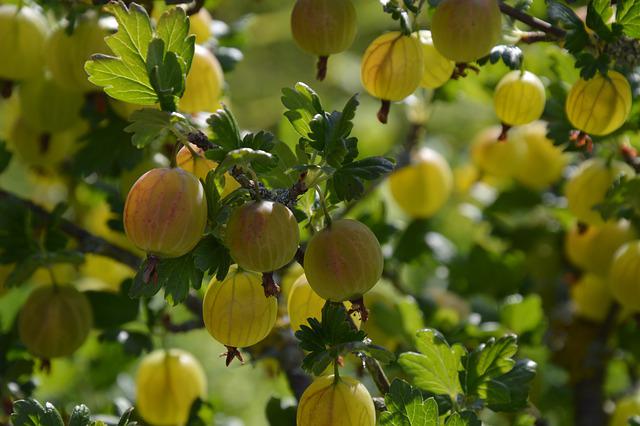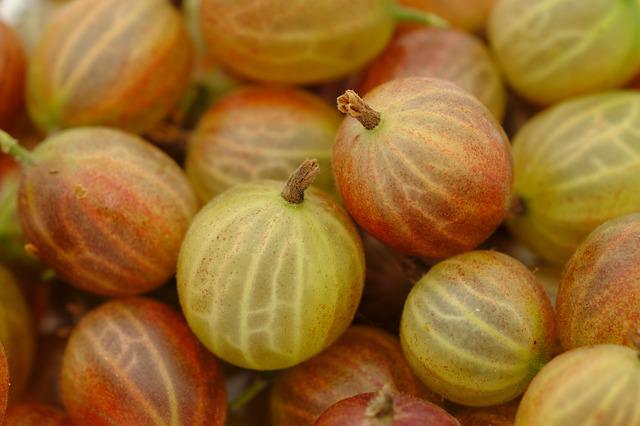What Does a Gooseberry Taste Like? —Facts About Gooseberries Tastes!

Gooseberries have a sharpness that might remind you of lemons, but they also have a slight sweetness that tastes like tropical fruit. These little berries are sharp, bright, and zingy most of the time. Gooseberry has a texture that is similar to that of a cherry tomato. The skin is thick, but you can easily pierce it with your teeth or a fork. Inside, it’s soft, pulpy, and juicy.
The gooseberry seeds can be eaten, but they aren’t as soft as the seeds in a cherry tomato. But they are not hard to chew, and they give the berry a crunch.
“Sour grapes” has a different meaning when it comes to gooseberries. Gooseberries can be yellow, greenish, or reddish and taste like tart grapes.
Table of Contents
Are Gooseberries Safe to Consume?
Surely, they are safe to eat. They are among the most nutritious and health-promoting foods, according to research.
Indian gooseberry appears to reduce total cholesterol levels, including triglycerides, without affecting levels of high-density lipoprotein (“good”) cholesterol.
People frequently use Indian gooseberry to treat high cholesterol and persistent heartburn. It is also used to treat diarrhea, osteoarthritis, and cancer, but these uses are not supported by solid scientific evidence.
Many people enjoy gooseberries’ tartness and unique flavors, but not everyone does. You should probably try them at least once to gain experience.
As with lemon and lime, gooseberries are frequently added to sauces and desserts because they are so robust. To truly appreciate the flavor of these fruits, it may be necessary to find the ideal combination of ingredients in a recipe.
Is it Safe to Eat Fresh Gooseberries?
Consuming raw gooseberries is not analogous to consuming an extremely acidic lemon wedge. Its tartness is more subdued, and it is combined with undertones of other fruity flavors absent in lemons.
The addition of a few fresh gooseberries to your salad is an excellent way to impart a tangy flavor without overwhelming your taste buds. You also can blend up some gooseberries and add them to the salad dressing.
How Do You Consume Gooseberries?
So, just how do you eat gooseberries? To begin with, many people consume them raw, which is the most common method. Even though they have a stronger tartness, the sweetness and other flavors help soften the tartness.
As a result, you can eat one right away or add fresh gooseberries to your salad as a finishing touch.
Gooseberries can also be eaten in a number of other ways. Gooseberries can be used to make pies, crisps, crumbles, and tarts. Gooseberry jellies and jams are a favorite of some people. In some cases, they’re also used as a base for cocktails or salad dressings. Gooseberries, as you can see, have a wide variety of uses.
What Is the Texture of a Ripe Gooseberry?
The exterior of a gooseberry should have the consistency of a grape. The skin is extremely thin, making it easy to consume. The texture of gooseberry is very similar to that of a cherry tomato. It is soft, pulpy, and juicy.
If it is not overripe, it should not be mushy. In addition to having hard seeds, gooseberries are also edible. They can be safely chewed without causing tooth damage.
When Are Gooseberries Ripe?
Gooseberries are usually only available in the summer, especially in July. You can do the squeeze test to determine when they are most ripe and ready to eat. Take a gooseberry in your hands and put very light pressure on it.
Is it tough? Most likely, it’s not ready yet. Is it a soft thing? It might be a bit too ripe.
When It Comes to Preserving Gooseberries, How Do You Keep Them Fresh?
Fresh gooseberries need to be stored immediately after purchase to maintain their freshness for the longest time possible. The following are your choices:
- Countertop. Unless you plan to eat the gooseberries within a few days, it’s best to keep them out of the kitchen counter. Remember that gooseberries will go bad the quickest if you leave them out on the counter.
- In the freezer. However, gooseberries will only keep for two to three days if cleaned, even when refrigerated. For a week, unwashed gooseberries can be stored in the refrigerator.
- In the fridge. You can freeze your gooseberries to keep them fresh for six months. Once they’ve been frozen, they can either be placed on a baking sheet and stored that way (or they can be packed with simple syrup or sugar).
- Canning. Gooseberries can be canned in the same way as any other fruit and stored for a year if the containers are properly sealed.
- Drying. Drying gooseberries is as simple as steaming, chopping, and laying out the berries. Drying them out allows you to store them in the pantry for up to six months or freeze them to use whenever you want. To bring a dried gooseberry to life, all you need to do is add some water.

